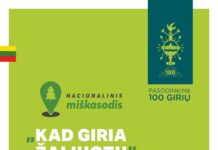
In 2022 traditional Lithuanian straw art will be submitted for inclusion in the UNESCO list of intangible cultural heritage next year by the Lithuanian National Culture Centre, at the request of Culture Minister Simonas Kairys.
A task force has been formed consisting of experts from the LNCC, the Lithuanian UNESCO commission secretariat, the Vilnius Ethnic Centre, the Lithuanian National Museum, the Lithuanian History Institute, and a non-governmental association of straw art creators, “Heavenly Straw Mobiles”.
There are many names for the straw mobiles in Lithuanian, many of them referring to them as a chandelier, spider, heaven, world and even paradise. They are typical folk art forms throughout Lithuania, used for decorative as well as ritual purposes. They vary in form, but are most commonly based on two pyramids, with one pointing up and the other downward. The “best” mobiles are made to rotate, as they cleanse the home and fill it with positive energy and harmony.
Special mobiles are made for weddings, for hanging over a baby’s crib or the family dinner table, for Christmas Eve (Kūčios), Easter and other celebratons – and just for decoration. There is a renewal of interest in this branch of folk art in Lithuania, with many eager to learn and practice it as a way of preserving traditional Lithuanian cultural identity. The Ministry of Culture and the task force are conducting a survey about the mobiles, most often called “sodai”, to determine how relevant they are in Lithuania today.
Three Lithuanian cultural phenomena are already on the UNESCO list: cross-carving and its symbolism in Lithuania, song and dance festivals in the Baltic countries, and Lithuanian “rounds” – polyphonic singing.
News from Alkas.lt





























